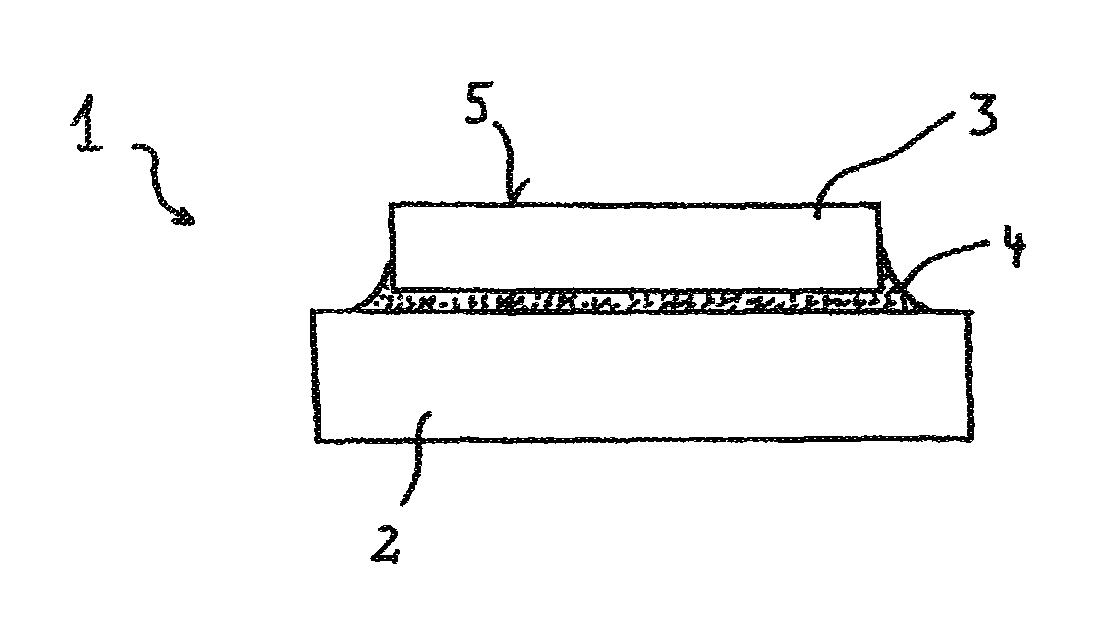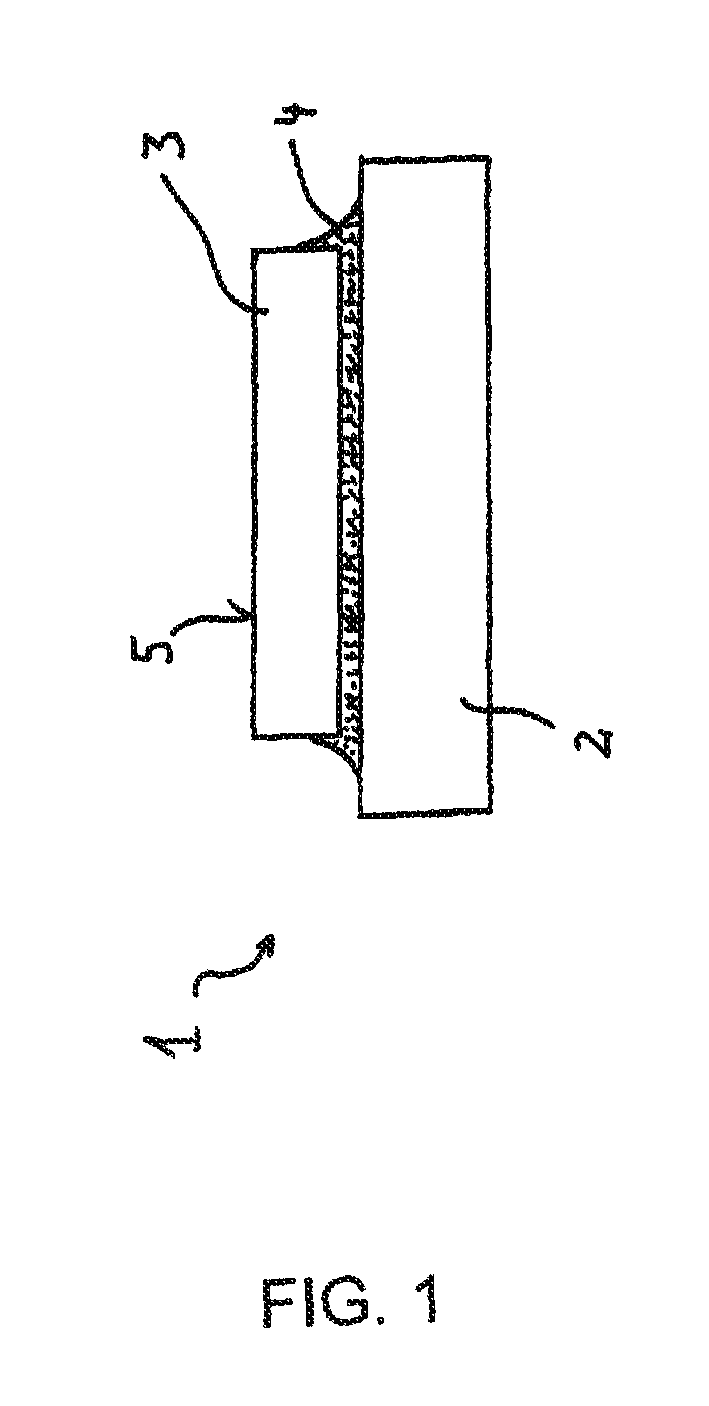Stress measurement sensor
a stress measurement and sensor technology, applied in the direction of instruments, using electrical/magnetic means, electric/magnetic measurement arrangements, etc., can solve the problems of temporally limited reliable service life of stress measurement sensors formed with such a joining material, measurement errors, etc., and achieve good transmission of arising stresses and good durability
- Summary
- Abstract
- Description
- Claims
- Application Information
AI Technical Summary
Benefits of technology
Problems solved by technology
Method used
Image
Examples
Embodiment Construction
[0053]FIG. 1 shows a schematic representation of an embodiment of a stress measurement sensor 1 according to the invention. This sensor includes a base 2 and a sensor element 3, which is fixed on the base 2. The sensor element 3 operates according to the SAW principle. For this reason, a sensor surface 5 is thereby provided, disposed opposite the base 2, which surface has corresponding, well-known patterns, not shown here, wherein surface acoustic waves, the characteristics of which are evaluated for the measurement, extend along said sensor surface. The body of the sensor element 3 is formed from a piezoelectric carrier crystal. “Carrier crystal” is therefore not understood to be a pure crystalline material, but may also be a (partially) amorphous material, such as a ceramic.
[0054]The sensor element 3 is fixed to the base 2 by means of a joining material 4, and fastened thereto. Mechanical tensions or stresses exerted on the sensor element 3 are transmitted to the base 2 by means o...
PUM
| Property | Measurement | Unit |
|---|---|---|
| process temperature | aaaaa | aaaaa |
| temperature | aaaaa | aaaaa |
| temperature | aaaaa | aaaaa |
Abstract
Description
Claims
Application Information
 Login to view more
Login to view more - R&D Engineer
- R&D Manager
- IP Professional
- Industry Leading Data Capabilities
- Powerful AI technology
- Patent DNA Extraction
Browse by: Latest US Patents, China's latest patents, Technical Efficacy Thesaurus, Application Domain, Technology Topic.
© 2024 PatSnap. All rights reserved.Legal|Privacy policy|Modern Slavery Act Transparency Statement|Sitemap



